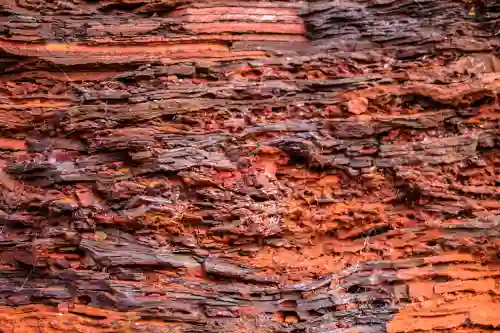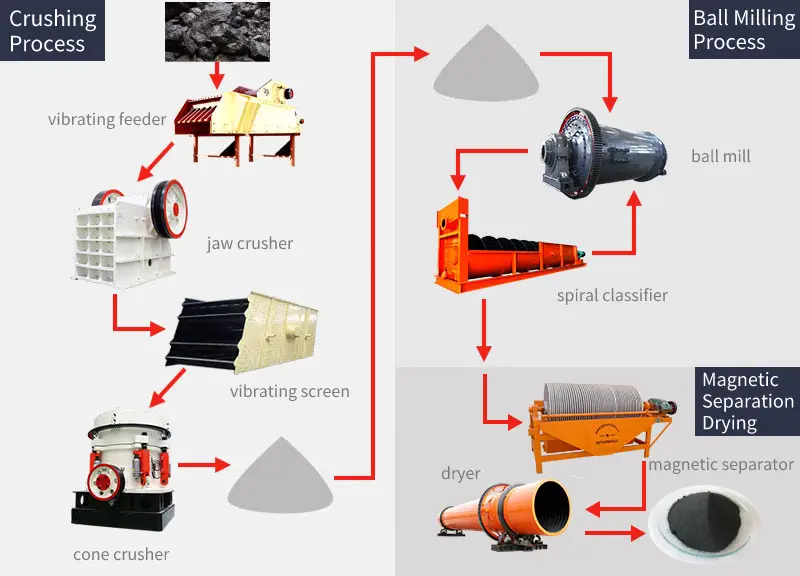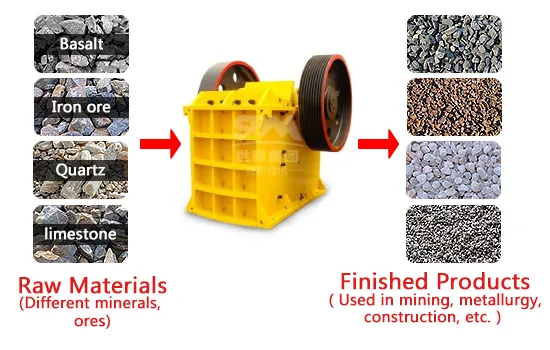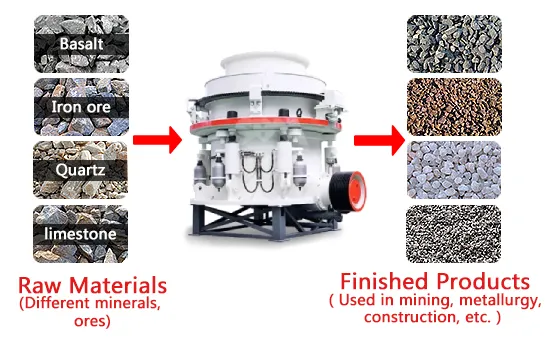The company's main products are HGM series micro pulverizer, superfine micro pulverizer, micro pulverizer, superfine pulverizer, pulverizer and matching hammer crusher, etc.
03/08/2022 admin
Iron ore is an important raw material for iron and steel production enterprises. Natural ore (iron ore) gradually selects iron through procedures such as crushing, grinding, magnetic separation, flotation, and gravity separation. In theory, any ore containing iron or iron compounds can be called iron ore. However, industrially or commercially, iron ore is different from manganese ore. Iron ore not only needs to contain iron, but also needs to have useful value. Iron exists in nature in the form of a compound, especially in the form of iron oxide in a particularly large amount, but there are also many impurities. Such as hematite, magnetite, siderite, limonite, etc.




The iron ore processing and production process mainly includes three processes: crushing, grinding and beneficiation. In the crushing process, the three-stage closed-circuit crushing is more modern and suitable for high-hardness iron ore crushing and can complete the work of ore crushing and partial dissociation, thereby improving the subsequent grinding efficiency. In the grinding process, the two-stage one-closed grinding is an efficient grinding process, which can make the iron ore grind more fully. In the beneficiation process, the more representative ones are: “stage grinding, weak magnetic separation – reverse flotation process”, “full magnetic separation separation process”, “ultrafine crushing – wet magnetic separation tail throwing process”.

Iron ore is gradually selected through the procedures of crushing, screening, grinding, classification, magnetic separation, flotation, gravity separation, roasting reduction, filtration and dehydration. A mineral aggregate containing iron element or iron compound is obtained. This process mainly adopts jaw crusher, cone crusher, vibrating screen, ball mill, flotation machine, jig, spiral chute, magnetic separator, spiral classifier, rotary kiln, dryer, etc.
1. Iron ore crushing process:
In the iron ore crushing process, the feeder, first crushing, secondary crushing, screening, fine crushing and dry selection are generally used. For the sake of economy, generally the finer the ore particle size entering the dry separator, the higher the proportion of iron-bearing ore that is dry selected.
Jaw crushers are generally used for head crushing in iron ore production operations, and gyratory crushers are often used in large mining operations. Jaw crusher is the most traditional and most stable and reliable primary crushing equipment and has the widest application range.
In the iron ore crushing production process, there are generally two types of secondary crushers: fine jaw crusher or cone crusher.
The fine jaw crusher is generally used for small iron ore dressing fields, and its equipment value is low, the structure is simple, and the maintenance is simple and convenient. However, the discharge port of the fine jaw crusher can only be adjusted to a minimum of 25mm, so the crushing particle size is generally below 40mm.

The structure of the cone crusher is more complex, and the equipment value is higher. However, its output is larger, the crushing particle size is smaller, and the service life of wear-resistant parts is longer. Therefore, cone crushers are widely used in relatively large iron ore dressing fields.

From the production efficiency and cost of iron ore, the use of cone crusher can effectively reduce the production cost. Because the cone crusher can provide a smaller product size, from the overall process, the use of lamination equipment to complete the main crushing task of iron ore is the most economical production method.
2. Iron ore screening process:
Iron ore screening equipment generally uses a circular vibrating screen to screen the materials after the second crushing. Generally, materials with a size of 10mm or less can be screened for dry selection. After screening, materials with a size of 10-40mm enter the fine crusher for fine crushing. Of course, the particle size range of screening can be adjusted according to the actual situation, in order to achieve the most economical operation mode.
3. Iron ore grinding process:
The beneficiation of iron ore mostly adopts one-stage grinding or two-stage grinding. Among them, the two-stage grinding can be divided into two-stage continuous grinding and stage grinding-stage separation process.


The principle process of stage grinding is to discard the gangue (tailings) that have been dissociated from monomers by roughing under the condition of coarser particle size in the first stage of grinding, and then feed the coarse concentrate into the second stage of grinding to grind to a certain size. The required fineness, and then selected to obtain qualified iron concentrate. Since a part of the final tailings is selected under rough grinding conditions, the amount of ore into the second stage of grinding is reduced, the volume of the required mill is reduced, and the amount of ore in subsequent beneficiation operations is also reduced. Therefore, the processing cost of beneficiation is reduced. It can be seen that the stage grinding-stage separation process is more reasonable than the two-stage continuous grinding.
4. Iron ore classification process:
Spiral classifiers are widely used in iron ore concentrators. They can be combined with ball mills to form closed-circuit circulation diversion ore sands or used in iron ore gravity concentrators to classify ore sands and fine mud. It is often used for particle size classification of ore pulp in the iron ore processing process, as well as desliming and dehydration in ore washing operations.
5. Iron ore magnetic separation processing process:
Magnetic separation is one of the main methods for sorting iron ore. Magnetic separation is divided into weak magnetic separation and strong magnetic separation. Weak magnetic separation is mainly used for the separation of strong magnetic iron minerals such as magnetite and vanadium titanomagnetite. Strong magnetic separation is mainly used for separation of hematite. The main weak magnetic mineral.
The separation process of weak magnetic separation mainly adopts stage grinding-stage magnetic separation and throws qualified tailings at each grinding stage to minimize the amount of regrinding in the next stage, so as to save energy and reduce consumption and improve mineral processing. plant economic goals.
6. Iron ore flotation processing process:
The selection of the iron ore flotation process mainly depends on the properties of the iron ore and the requirements for the quality of the concentrate.
7. Iron ore gravity separation processing process:
For iron ore, the gravity separation method is mainly used to separate weakly magnetic iron ore. There are two applications: one is that the geological grade of the ore deposit is high (about 50%), but the ore body is thin or there are many interlayers. Waste rock is mixed in during mining to dilute the ore. For this kind of ore, only crushing and no grinding can be used. In the case of coarse particle size, the coarse tailings are discarded through gravity separation, so as to restore the geological grade. The coarse-grained medium-grade concentrate is obtained, or further processed, or sent directly to the blast furnace for smelting, which is called coarse-grained gravity separation. The other is for red ore or mixed ore with finely embedded particle size (that is, red ore containing weak magnetic and strong magnetic magnetite), after crushing and grinding to separate the iron mineral monomer, through gravity separation or Magnetic gravity separation to obtain fine-grained high-grade concentrate, which is called fine-grained gravity separation.
8. Iron ore roasting reduction processing process:
The iron ore magnetization roasting technology is a process in which the rotary kiln equipment is used as the main carrier, and then the hematite is converted from weak magnetism to strong magnetism by controlling the temperature and atmosphere in the kiln. The iron ore with qualified particle size and other materials provided are mixed in proportion and fed into the rotary kiln from the kiln end. During this period, it will move in the opposite direction with the hot air flow, and gradually complete the processes of preheating, drying, decrystallization water, and reduction roasting. The roasted ore is discharged from the kiln head.
According to the different mineral composition and properties of iron ore, a variety of iron ore processing processes are currently used.
The ore mainly containing magnetite is processed by a simple and effective weak magnetic beneficiation method. If it still contains weak magnetic iron minerals such as hematite, it can be supplemented by gravity separation.
The ore mainly containing hematite (belonging to red ore and the like) can be processed by magnetization roasting – weak magnetic separation, flotation or gravity separation.
The treatment of magnetic-red mixed ore can adopt magnetic-floating or magnetic-recombination process.
For other kinds of iron ores, such as limonite, siderite (both of which also belong to red ore), vanadium titanomagnetite and other ores, washing and gravity separation, roasting magnetic separation or magnetic- Reselection – electrical treatment.
If you have some questions about our products, please feel free to fill out the form below, and we will contact you within 24 hours.